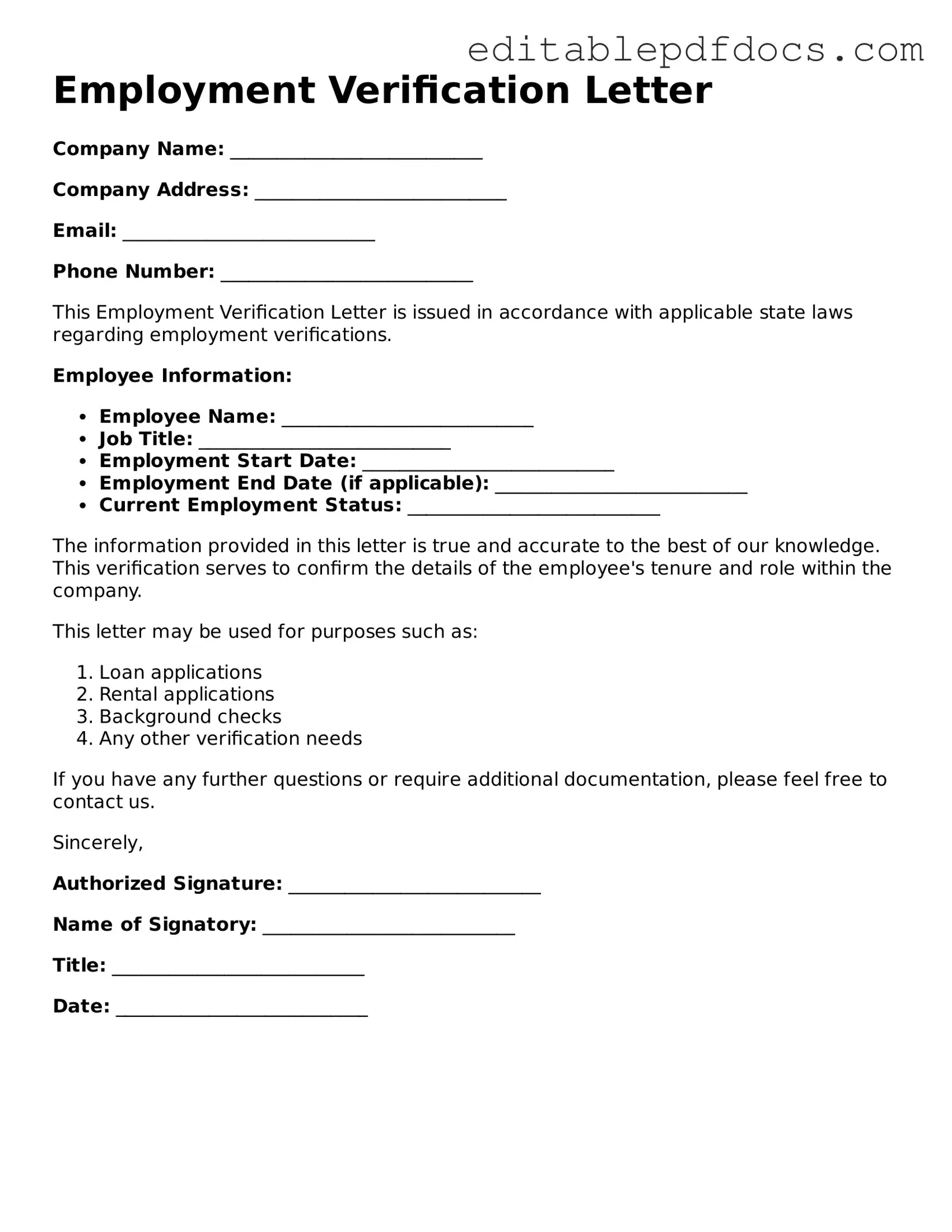Filling out an Employment Verification form can seem straightforward, but many individuals make common mistakes that can lead to delays or complications. One frequent error is providing inaccurate employment dates. Employers often require precise information regarding when a person started and ended their employment. Even a small discrepancy can raise questions and potentially jeopardize the verification process.
Another mistake is failing to include all relevant job titles. Many applicants list only their most recent title or omit previous positions held within the same company. This omission can create confusion about the individual’s experience and responsibilities. It is essential to provide a complete picture of one’s employment history.
Inaccurate contact information for the employer is also a common issue. Providing the wrong phone number or email address can hinder the verification process. It is crucial to double-check this information to ensure that the verifying party can easily reach the appropriate contacts.
Some individuals neglect to sign and date the form. A signature is often required to authenticate the information provided. Without it, the form may be considered incomplete, leading to unnecessary delays in the verification process.
Additionally, applicants sometimes fail to clarify their employment status. For instance, distinguishing between full-time, part-time, or contract work is important for potential employers. Misrepresenting this status can lead to misunderstandings and affect hiring decisions.
Another common mistake is overlooking the need for supporting documentation. Some employers may request additional proof of employment, such as pay stubs or tax documents. Failing to provide this documentation can delay the verification process and lead to further inquiries.
People often underestimate the importance of clarity in their descriptions of job duties. Vague or overly complex descriptions can confuse the verifier. Clear and concise language helps ensure that the individual’s responsibilities are understood and accurately represented.
It is also important to avoid using outdated information. Individuals should ensure that all details reflect their most current employment status. Relying on old records can lead to inaccuracies that may impact future employment opportunities.
Finally, some applicants rush through the process without reviewing their entries. Taking the time to carefully proofread the form can prevent many of the mistakes mentioned. A thorough review can catch errors that might otherwise lead to complications in the verification process.
